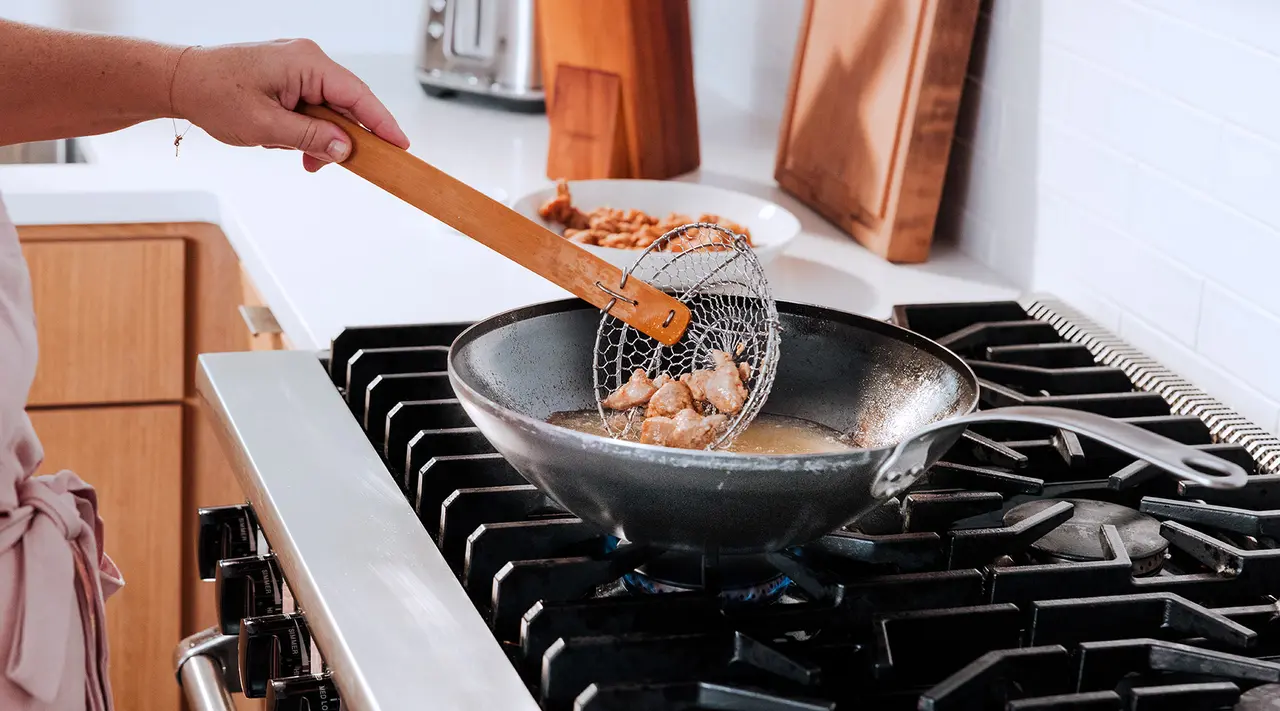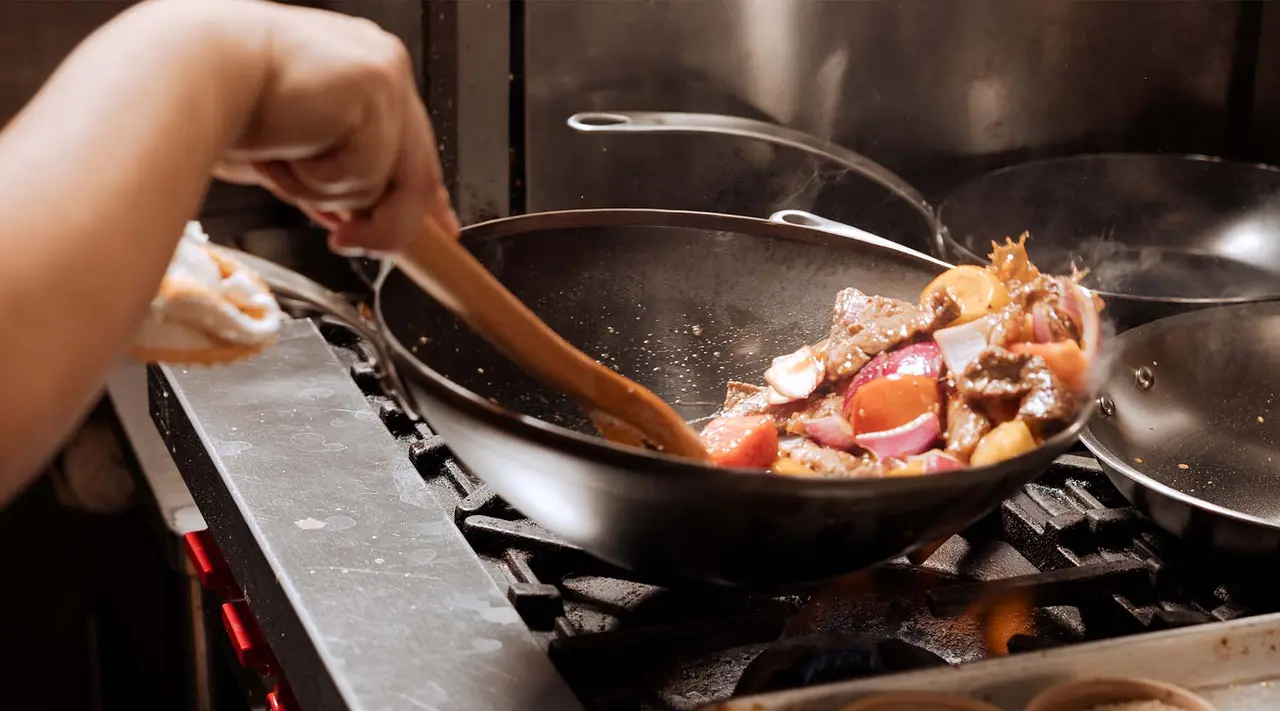When it comes to fast, high heat cooking, nothing quite compares to a wok. This Chinese restaurant kitchen stalwart is the tool we reach for when we want charred, tender-crisp meat and vegetables; perfect fried chicken; smoky stir-fried noodles, and more.
In order to achieve this level of deliciousness, of course, a wok has to be able to get really hot. Other than its signature shape—conical with high, sloping sides—the most important element of a wok is that it’s made from materials that can withstand these roaring high temperatures. We’re talking, of course, about carbon steel and cast iron. Today, we’re putting these two similar (but still very distinct) wok materials head to head.
Understanding Carbon Steel and Cast Iron

Cast iron and carbon steel are both famously excellent at searing, deep frying, and other high heat cooking methods.
What Is Carbon Steel?
Carbon steel is made from a sheet of metal that’s stamped into a thin disc before being molded into shape. This process makes a piece of cookware that’s lighter than cast iron by nearly half, but which retains heat just as well and can be seasoned to create a non stick finish. Because it holds heat so well, we love to use carbon steel for searing, roasting, and stir-frying, all of which depend on steady high heat. Carbon steel is also more responsive, and distributes heat more evenly, than cast iron.
What Is Cast Iron?
Similar to carbon steel, cast iron is made from an alloy of carbon and iron, though with a slightly higher ratio of iron: whereas carbon steel is typically made with only 1% iron, cast iron contains anywhere from 2% to 4%. This makes it both heavier and more brittle—hence why cast iron pans tend to be thicker than carbon steel pans.
Carbon Steel vs. Cast Iron Woks: Head-to-Head Comparison

See how these two wok materials stack up in terms of performance, durability, and ease of use.
Weight and Maneuverability
Carbon steel weighs significantly less than cast iron: while our 12” Carbon Steel Wok weighs just under 4.5 pounds, for example, a 12.5” cast iron wok from the cookware brand Lodge weighs nearly 10 pounds. This makes a pretty big difference when you’re tossing your food—crucial for stir-frying—or transferring a wok full of hot oil over to the sink. A carbon steel wok offers better maneuverability and a safer, less cumbersome experience.
Heating Properties
Both carbon steel and cast iron retain heat beautifully, meaning they’ll stay hot for a long time even after you’ve taken them off the burner. When it comes to stir-frying, however, you want a pan that both stays hot and responds quickly to changes in temperature—something that carbon steel does much better than cast iron.
Durability and Maintenance
Carbon steel and cast iron are both extremely durable: not only do they resist warping, chipping, and other forms of damage, but they’re also easy to restore or re-season as needed.
That being said, carbon steel is slightly more durable than cast iron, which—as we mentioned earlier—tends to be more brittle and prone to cracking if dropped.
Cooking Performance
While cast iron’s heat retention makes it a great choice for baking, braising, and other low-and-slow methods, carbon steel is much better for quick, high-heat recipes, since you can quickly cut the heat to prevent small ingredients (e.g. minced garlic and ginger) from burning.
Versatility in Cooking
The carbon steel wok’s relatively quick, even heating ability, non stick surface, and lightweight, durable build make it an incredibly well-rounded piece of cookware. If you’re looking for a versatile pan—one that can stir-fry, sauté, steam, and more—we’d definitely recommend carbon steel over cast iron.
Why We Prefer Carbon Steel Woks

Our Carbon Steel Wok combines elegant, user-friendly design with a rugged, long-lasting build that’s easy to maintain and build up a naturally non stick cooking surface.
Made from pre-seasoned, high-grade carbon steel for optimal durability and precision, it offers a comfortable, ergonomic handle for an easier grip and features a flat bottom, ensuring its compatibility with all stovetops. Conical woks, while more accurate to the original design of woks, require an extension to safely sit on stovetops—our flat bottomed wok skips the need for this and is able to be used on all stoves, including induction.
Ready to Shop?
Carbon steel enhances everything we love about cooking with a wok: from its precise, even heating ability to its smooth, glossy non stick surface, it beats out cast iron by a landslide. So if perfectly crisp, custardy tofu, beefy chow fun, or even homemade fried chicken sounds like something you'd like to be able to whip up at a moment's notice, we recommend getting your hands on one.































